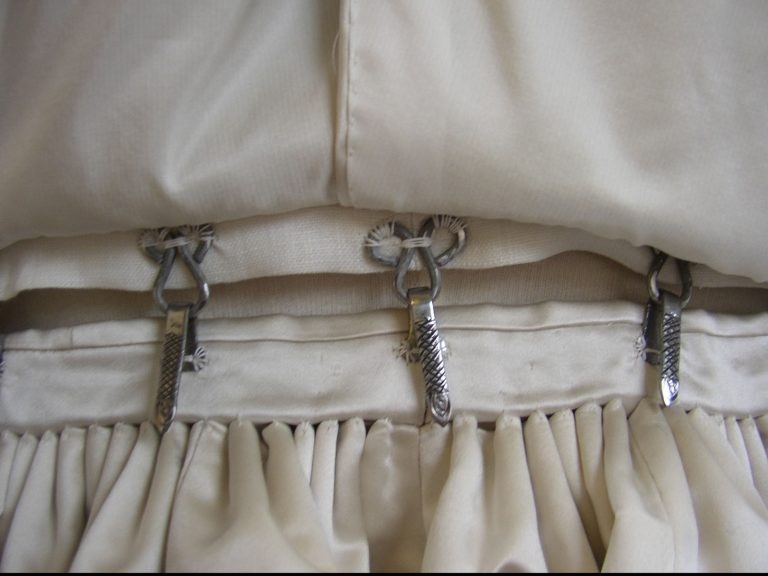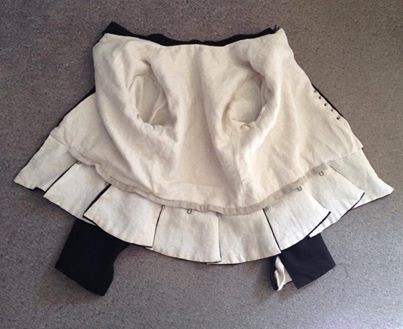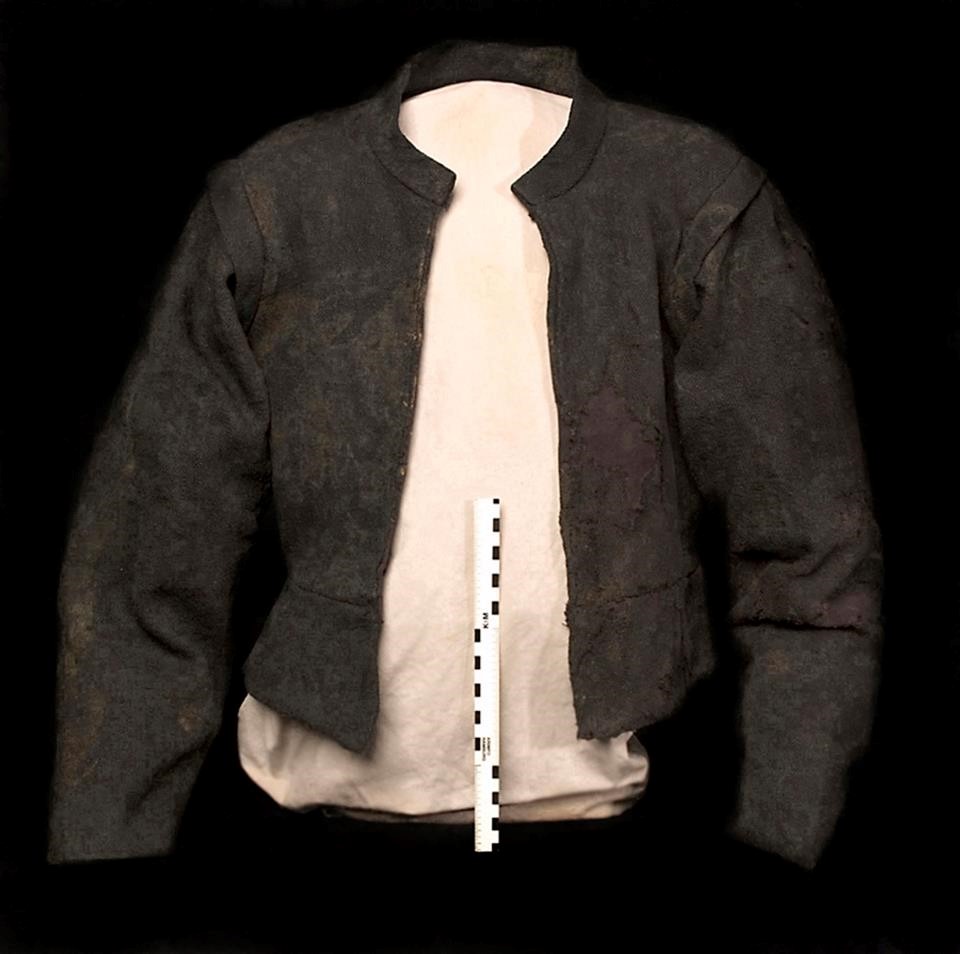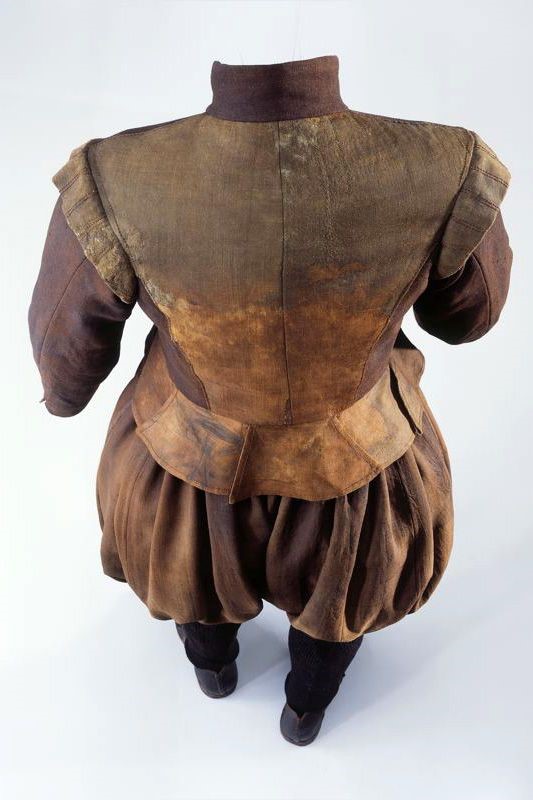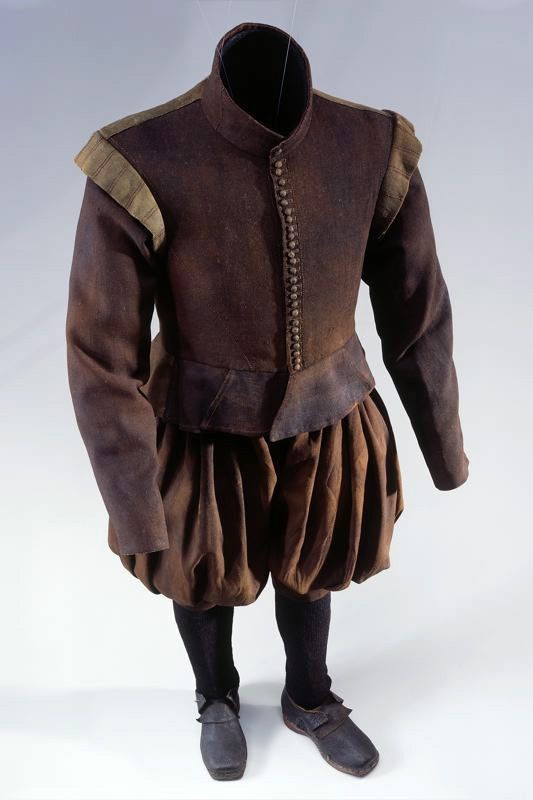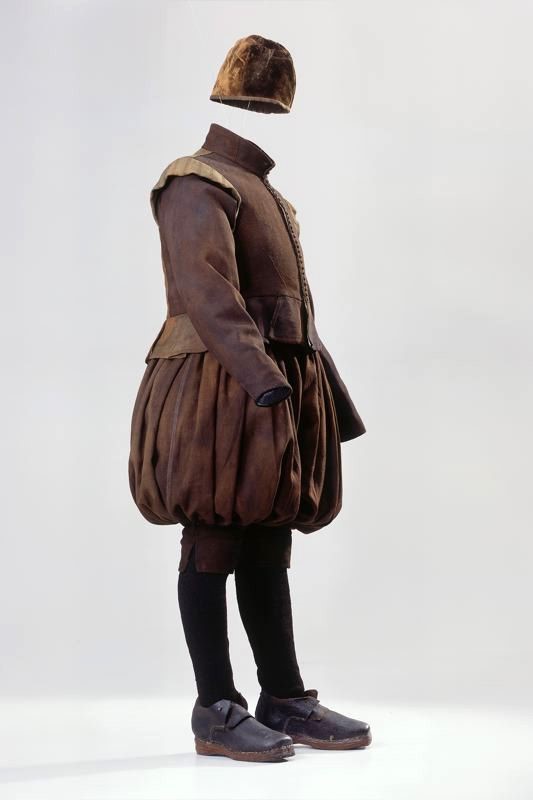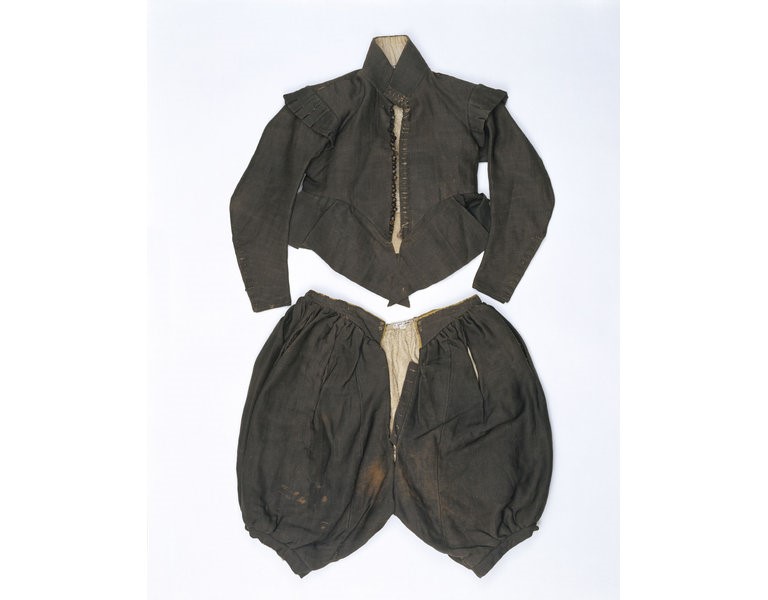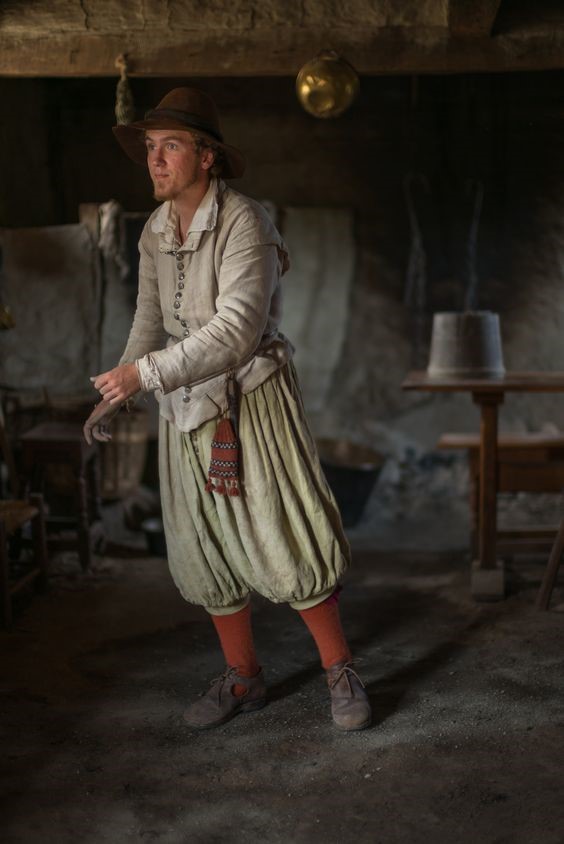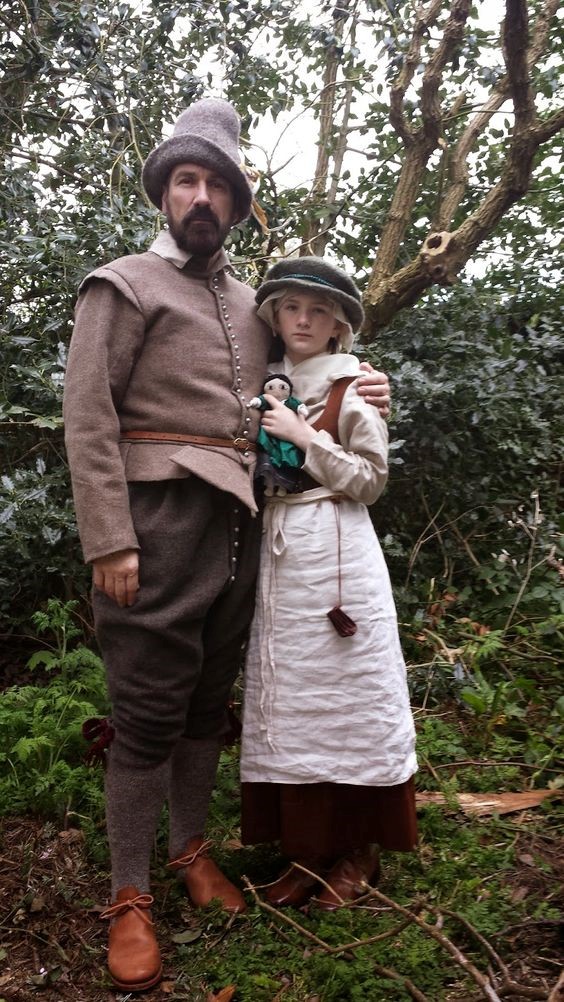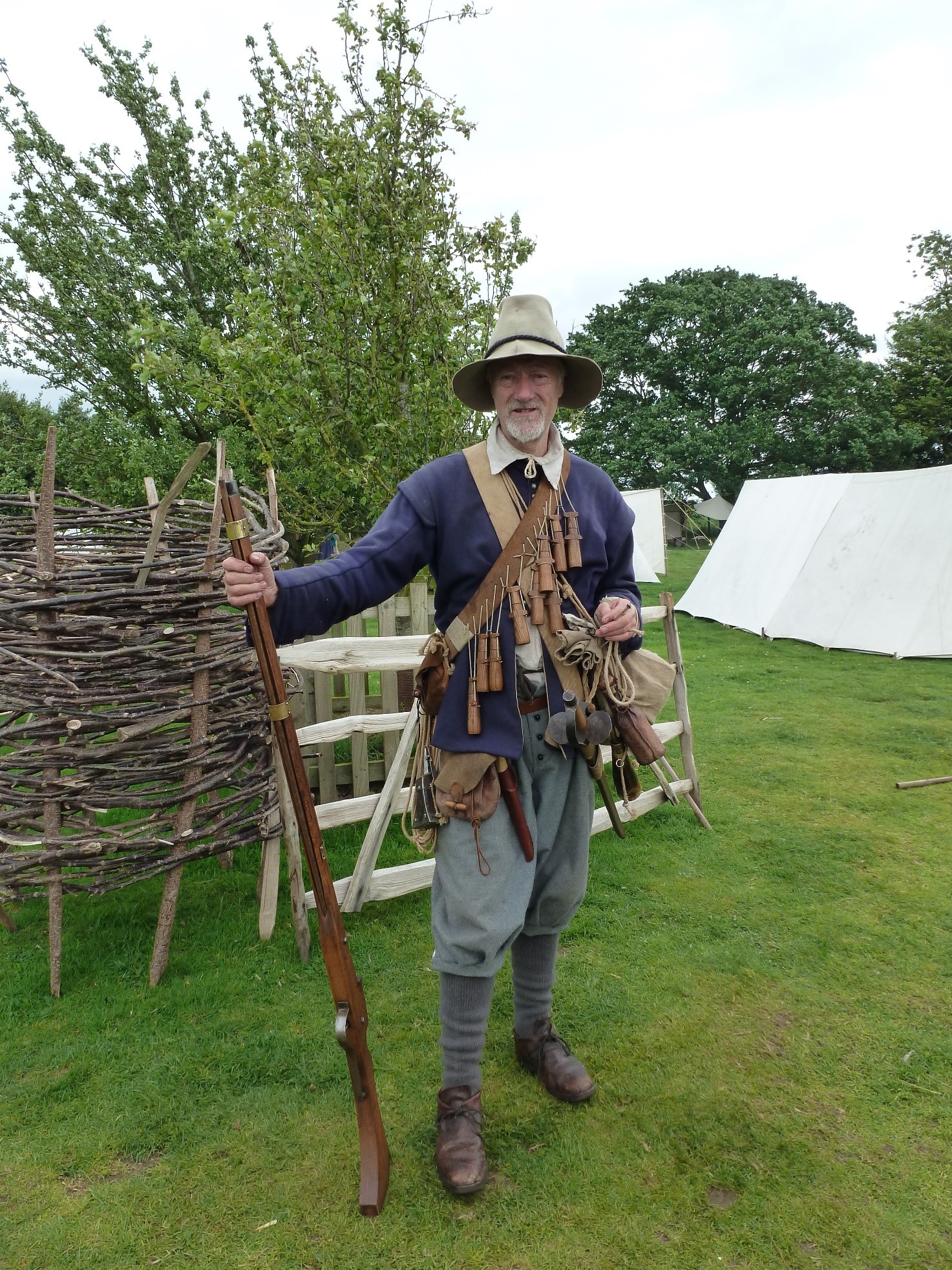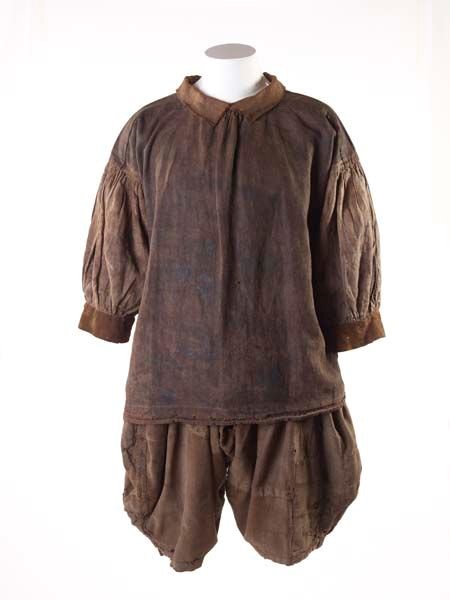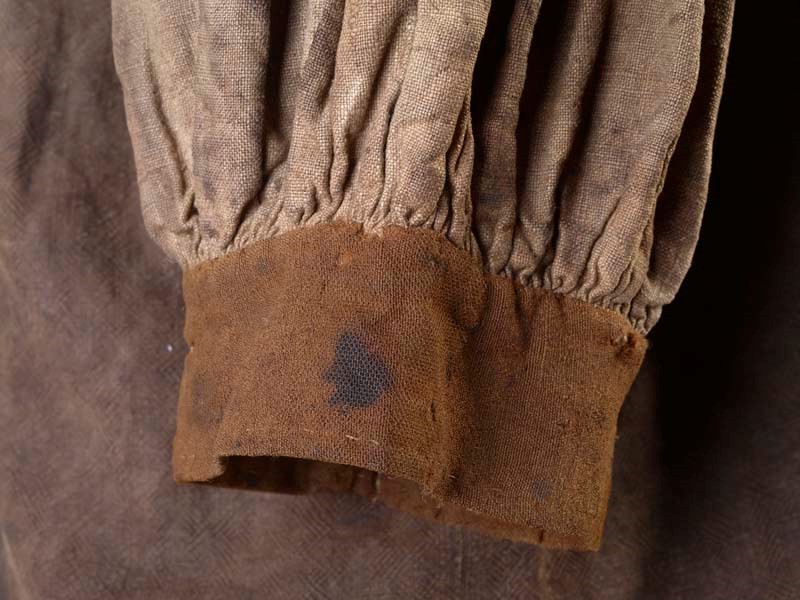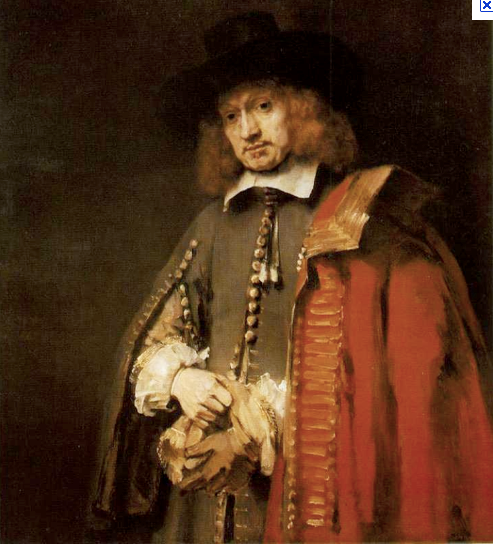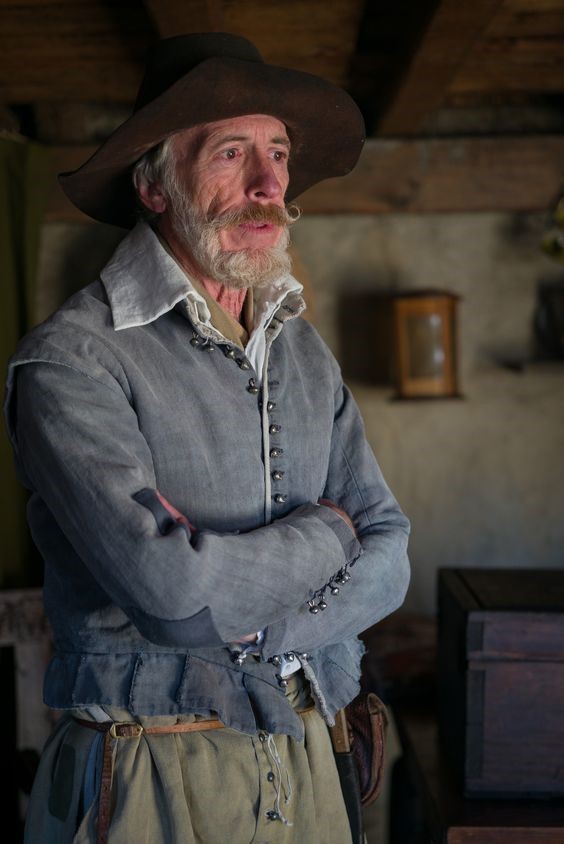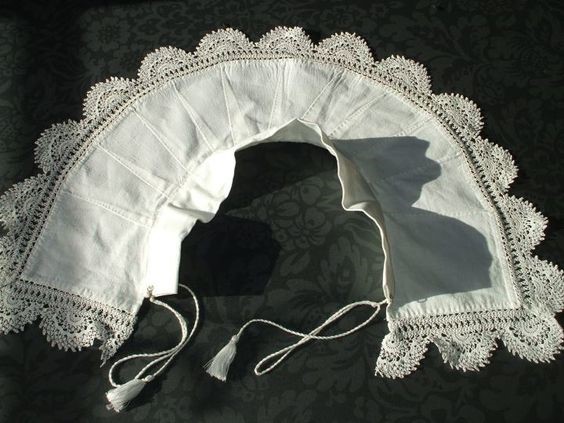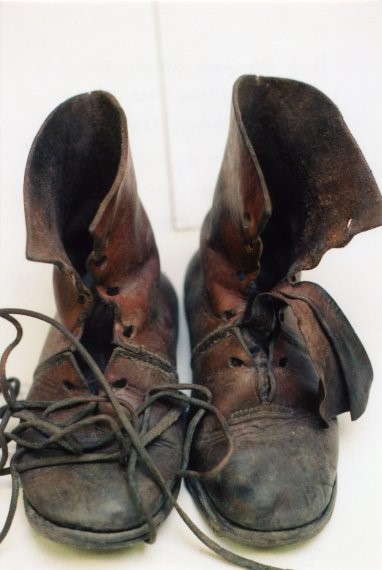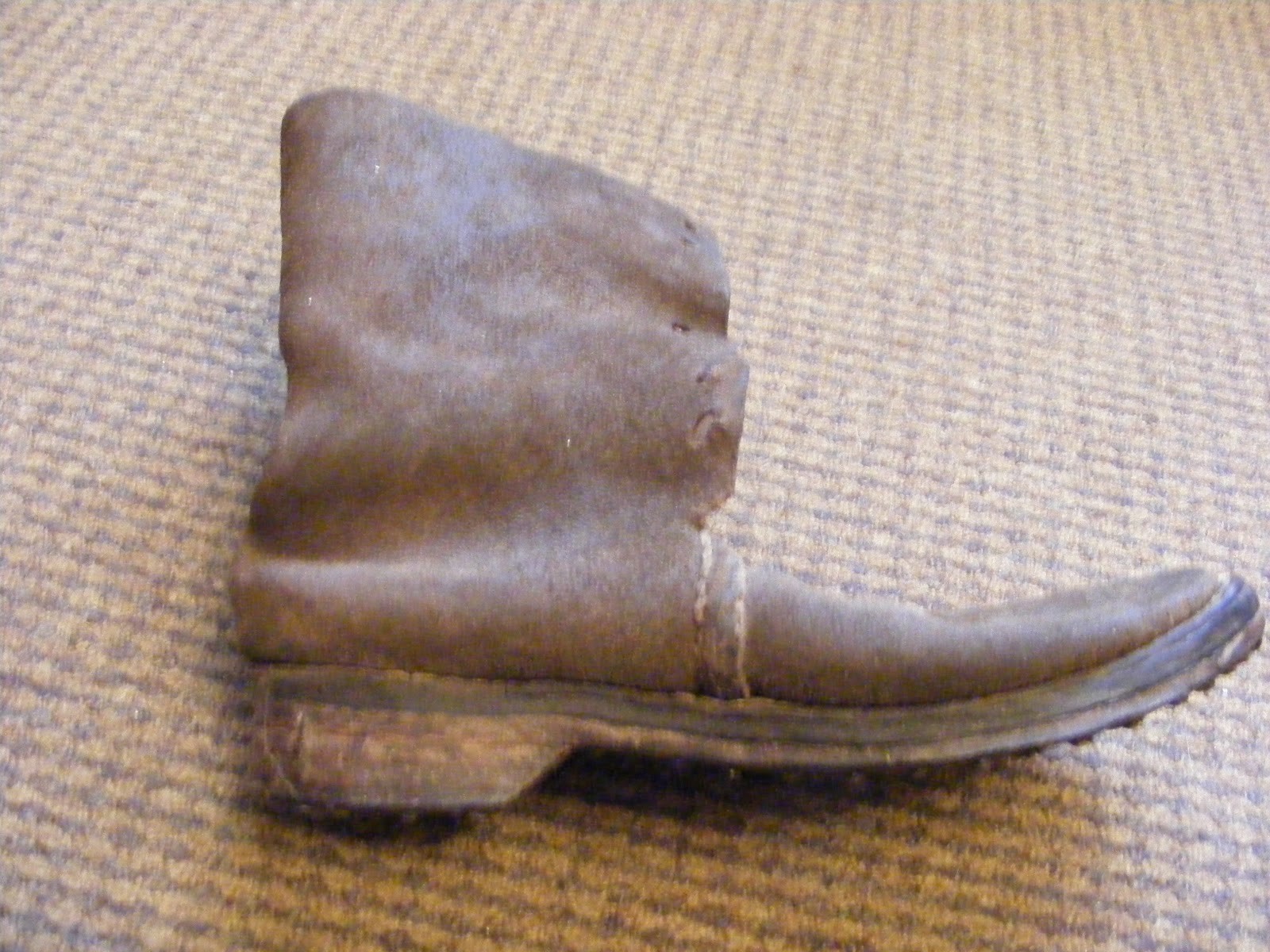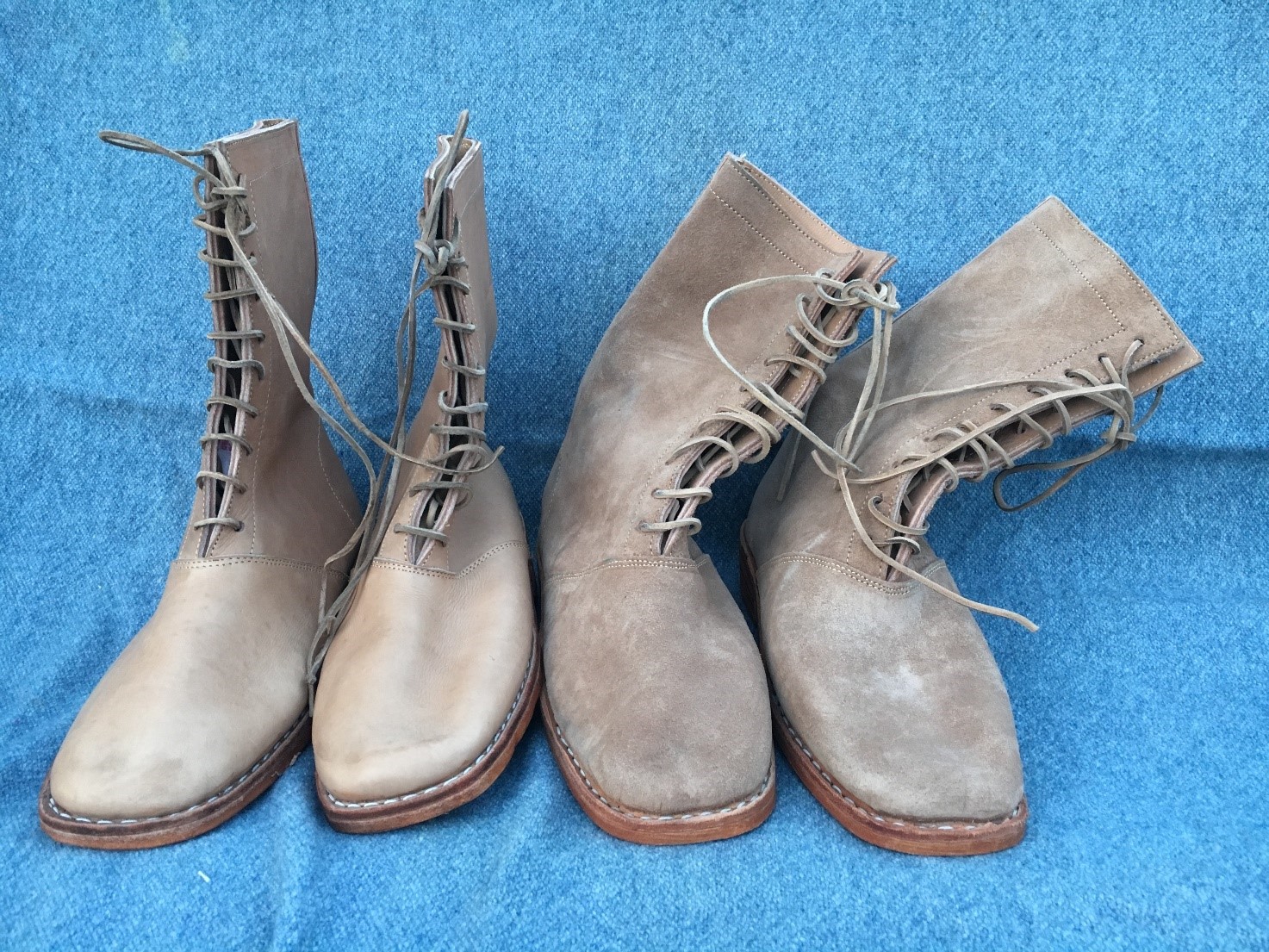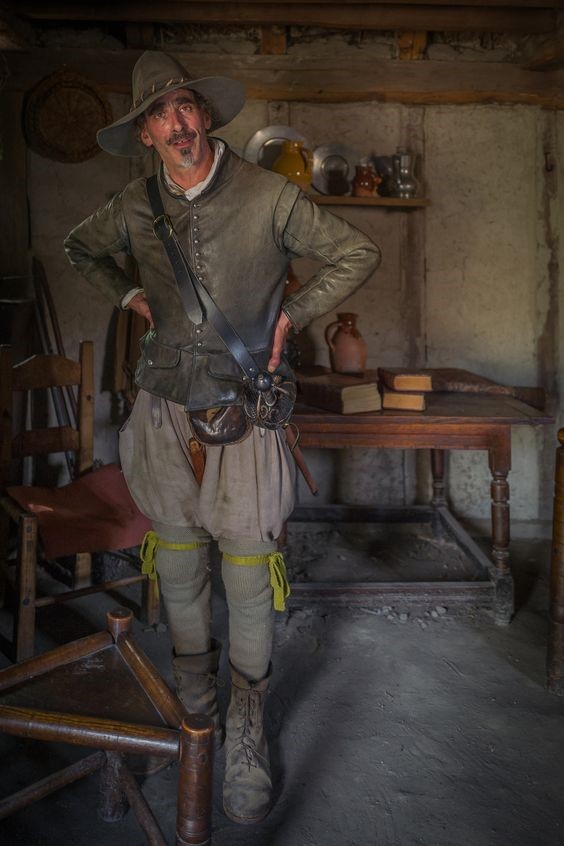Historical Evidence
Turning to the inventory lists for Portsmouth and Berwick from the early 1630s, several items stick out. In 1632 yards of cloth were purchased and turned into clothing, including:
50 men’s coats
24 children’s coats
51 waistcoats
3 cassocks
7 dozen pairs of hose (thus these were cloth hose, not knitted)
1633 goods shipped included:
164 pair of shoes
72 coats
191 pairs of stockings
51 shirts
“Moose coats”
14 waistcoats
39 men’s coats
And the 1635 inventory of both Portsmouth and Berwick reveals:
In Portsmouth
50 cloth cassocks and breeches
153 canvas cassocks and breeches
46 stuff cassocks and breeches
80 shirts
58 hats
40 dozen course hose
204 pairs of stockings
149 small hose
130 pairs of shoes
27 lined coats
79 Monmouth caps
23 red cloth waistcoats
16 “moose” coats
At Berwick
31 cloth cassocks and breeches
35 canvas cassocks
55 stuff coats and breeches
67 shirts
43 hats
191 pairs of shoes
152 pairs of stockings
28 Monmouth caps
43 lined coats
32 red waistcoats
So, what does this tell us?
- Stockings were probably a mixture of knitted and sewn, although sewn were much cheaper and efficient to make
- The term “waistcoat” is problematical and is somewhat controversial among textile historians. Both sexes wore them, although men tended to wear a simple pull-over version, with or without sleeves that could be worn under the doublet. Women wore a waistcoat that looked like a looser doublet, with shoulder wings and tabs. But men would wear colorful waistcoats. The issue we have is that in 1632 and 1633 they distinguish “men’s” coats and even “children’s” coats, but no “women’s” coats, so perhaps it is not unreasonable to speculate that the waistcoats mentioned were the women’s jacket version. However, in 1635 they specify “red” waistcoats, which fits with the notion that men wore colorful waistcoats as a layer over the shirt. This is all above my knowledge grade.
- Note that in 1635 they list “hats” and “Monmouth caps.” The hats were felt, and the Monmouth hats knitted. The military list also mentions “Headpieces” which were helmets. See separate section on hats.
- The term “coat” is also a problem, because several kinds of garments were referred to as coats, including doublets and jerkins.
- Cassocks were capes or overcoats, and it is interesting to see their increase in the inventories as they figured out how damn cold it is in New England.
- “Cloth” meant wool
- “Canvas” was hemp canvas, strong like modern cotton canvas, but not smooth, a rougher cloth, and mostly in its natural color. Linen canvas works
- “Stuff” is an all-encompassing term that often meant a poorer quality wool than “cloth,” or even mixed fiber fabric
Here are some examples of these garments and more thoughts along the way.
Doublet and Breeches
Doublets came either with the front cut down in a sharp V shape
Or relatively straight across the waist
Commonly the doublet was attached to the breeches to keep the former from riding up and the latter from falling down. This could be done with ties or hooks and eyes.
Here are some looks and outfits, both original and reproduction
Note breeches are lined. Apparently, this was common.
Not everyone wore a doublet. Here is a sailor’s outfit with an over work shirt
Cuff and wide shoulder support piece
Great Interpretation of a Soldier
Cassock
The cassock was an overcoat, often with slit sleeves so the arm could push through. The slit could be left open or buttoned close. A cassock could also be a cape that fit all around the body but with buttoned slits in the front.
Shirt and collar
So, shirts are interesting. They had either a wide collar or a short collar and a separate Falling Band was worn that projected out over the shoulders. These were a separate piece that were worn almost like a dicky or false turtleneck. Some were tacked to the shirt collar. It not only provided some elegance but may have saved wear and tear on the shirt collar. The Falling Band was easier to replace. Now how often these were worn by colonists involved in hard work every day is hard to know. One interesting point is that shirts and Falling Bands were usually closed with ties not buttons.
However, if you have a white shirt, I’m sure that is fine. If you want to make and tack a larger collar to it that is up to you. The basic construction of the rest of the shirt did not change throughout the 17th and 18th century. Still nothing but a bunch of rectangles.
This shirt would probably have a Falling Band
This one has the large collar with a linen tie at the neck
Shirts with large collar and ties at the neck.
Looks like Shakespeare had a large collar rather than a Falling Band
Falling Band
How to make one: http://www.renaissancetailor.com/demos_cavcollars.htm
Plain
Fancy
Reproductions
Socks/Hose
As indicated, socks could be knitted wool or sewn cloth. The former was sewn from cloth, the latter I don’t know. In one of the inventories they mentioned linen stockings and leather stockings (?). As most of us have knitted wool socks, that is fine, but Reconstructing History does have a pattern for sewn stockings.
Shoes
One thing about shoes is that in this period only the upper class had a heel. Apparently, the raised heel did not become common until the 1640s. However, most reproduction shoes come with heels. I would be a heel to say we cannot have heels; I’m certainly shoes with heels. They did have tall shoes similar to what we call Half Boots or Hi-Lo shoes, although the reenactor term for this earlier version is Startup Boots. Some claim that the difference between the periods is that the early 17th century startup boots did not have a tongue.
Frankly, we are being somewhat liberal with shoes because people do multiple time periods and shoes are so expensive. Just keep this in mind, a low quarter tie shoe will work, but not a buckle shoe. They didn’t have buckles like the 18th century.
Latchet shoes, closed and open
The taller heel tended toward the end of the 17th century. The center one is appropriate.
Start-up Boot



